It was a conclusion as safe as it was seemingly final: My Cuba is buried in Miami. I decided this on the day a cemetery worker locked the small glass door on the mausoleum niche, placing my father’s ashes next to the urn that holds the ashes of my mother.
A muted click of metal severed my final link to Cuba. Now, the remains of my grandparents and parents belonged to the American city that welcomed us with open arms and nurtured our choppy evolution from refugees to citizens. This was the city where, as a young Cuban girl, I would fall in love with the language, with words so precise they required the just-so pursing of lips and a certain swingy command. It was where my parents found Jesus and the Miami Dolphins, and where our Sunday devotions segued from altar to field to family table, where the mosaic bits of our Cuba winked in flavor pops and musical notes.
by Liz Balmaseda
Read post in Spanish >>
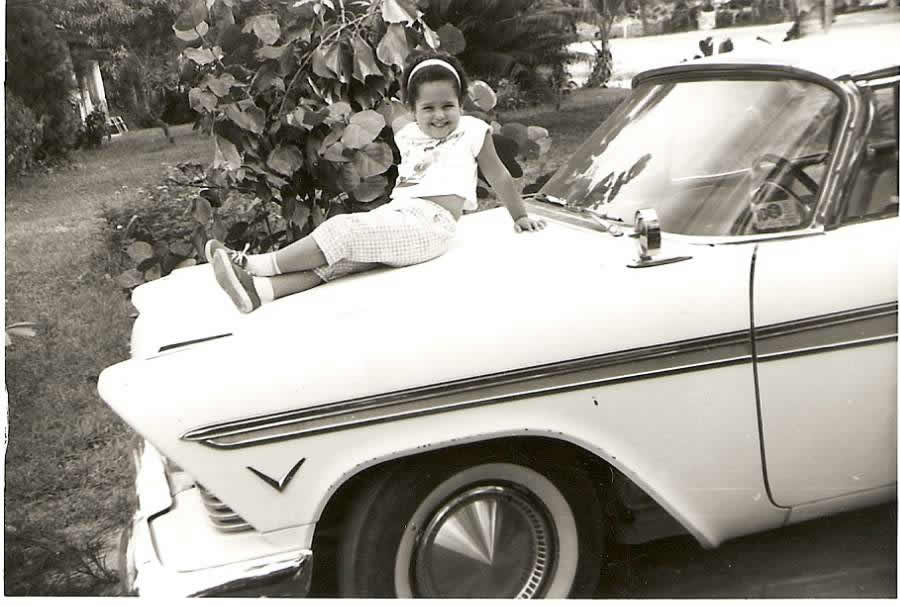
Liz in Miami, 1962
My Cuba is gone, I decided. It was a devastating thought. But to my astonishment, it was a liberating thought. The low-grade fever brought on by five decades of Castro jabber had broken, and so had my attachment to twists of foreign policy, to isla intrigues and The Wait for The Fall.
Gone!
My Cuba was a transplanted reality, an island that existed as long as my closest ancestors were alive. It was not alive because my parents droned on about Fidel, pined for lost land or dreamed of roasting that fabled lechoncito in the Cuban countryside. In the full vigor of their lives in exile, my parents and grandparents had moved on. They cherished their roots, their family and culture, but they had allowed the political conflict to ease into the backdrop. Sure, their feelings for Cuba on occasion influenced their votes at election time, but they had abandoned their early dreams of return.
And yet, to me, my parents’ forward march was unconvincing. Surely they yearned to walk the municipal plaza where they dated and the beach where they met. Surely they dreamed of showing me the home where my mother took cover when the rebels invaded our town in 1958, the town we fled in 1959 when I was just 10 months old. I did have occasion to visit my birthplace, Puerto Padre, as a 24-year-old woman, without my parents. I missed their narrative details, the details that told my unique story. I had put myself in their places – they had been young Cubans fleeing the island with their infant, leaving behind the world and people they knew. Was it a stretch to believe their hearts didn’t beat for Cuba?
So I tried to keep Cuba alive in the music I shared with them, in the meals I learned to cook, in decorative touches at home. Of course, the dread I felt behind it all was this: What a horrible thing it would be if my parents died before they could see Cuba again.
This torch I carried for the island of my birth proved to be a thing of curiosity to my Cuban cousin Roberto and his longtime partner Pepe. As newly arrived refugees in Miami 15 years ago, they stopped to contemplate a large José Martí poster one day in my home office. When he thought I was out of hearing range, Pepe turned to Roberto and remarked: “I didn’t know your cousin was so patriotic.”
When they furnished their own small apartment in Hialeah, they filled it with Native American artifacts that reflected their fascination for indigenous cultures, feathered headpieces and wild horses. They felt no need to pay tribute to Cuba on their walls or in their curios. Cuba hummed in their hearts, on their stovetop, and from their CD player.
In our conversations and American road trips, I came to realize the place I tried to keep alive for my parents was quite different than the one they had left. As the child translator and guide of my mother’s earlier years in exile, I felt it was my charge to keep the Cuba theme in her life somehow. After the deaths of my parents, the thought of the island, its dysfunctions and melancholia, were too much to bear. I gave myself permission to take the figment of Cuba off life support.
Then my cousin Roberto died.
Days later, I joined a small gathering of relatives at the small chapel where Pepe had organized his memorial service. They had been together for 45 years, since Pepe, the younger of the two, was just 23 years old. They carried out a love story in a time when such love was not only illicit but dangerous, when gay men filled Cuban government punishment camps. It survived in the most ancient and magnificent of ways: through blind family love.
And so it is not at all remarkable that during the days when an American Secretary of State made an historic visit to Havana, Pepe was playing out a more obscure but just as important storyline as he flew to Havana with the ashes of Roberto on his lap. The pageantry most important to him would be the procession of all his living siblings, their spouses and children who accompanied him to the family crypt where Roberto’s ashes would come to rest.
Technically it was Pepe’s family crypt, but Roberto’s mother was buried there as well. It was my cousin’s dying wish, on a dismal night in a tiny Hialeah apartment, to be buried there.
During those days I was transported to a morning in Havana in 1984. I had been assigned to cover a rare fashion event on the island on fairly short notice. In the years before cellphones and Skype, I simply landed at José Martí Airport and took a cab to the apartment building where my cousin Roberto lived with his mother, my father’s sister. I surprised the heck out of them. Their elated expressions at finding me at their front door would be engraved forever in my memory. Like the José Martí poster hanging in my office, that mental snapshot would be part of the time capsule that was my transplanted Cuba.
It was a capsule that would expand years later, when Roberto and Pepe settled in Miami. As I grew closer to them and listened to their stories of daily life in Havana, patches of their Cuba gradually became mine as well.
And after Roberto’s death, its essence came into sharper focus. It came to inform my sense of Cuba more richly than could any official report, white paper or politician’s platform. It was no longer a capsule of my own cautious construction, but one constructed by my family’s love. And because our foundation was solid, it could breathe in the experiences and stories of others, without fear.
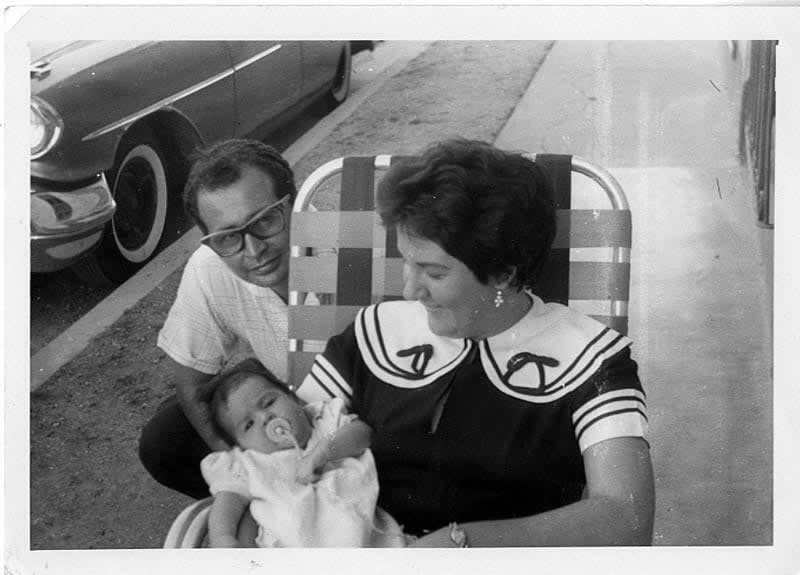
Liz as an infant in Puerto Padre, Cuba, with mom, Ada, and dad, Eduardo, just weeks before they left for their new life in Miami, 1959
I became convinced that no amount of fear or external influence could dim the light of this capsule. The light itself came to inspire this personal manifesto of sorts:
My Cuba doesn’t recognize imposed borders. I can find it in Havana and I can find it in Hialeah. I can find it in the cadence of a Cuban conversation overheard in West Palm Beach. I can find it in the sofrito soundtrack of my skillet.
It does not live to be the perfect, peeling backdrop for photographers seeking poverty porn. It is not an aesthetic that can be ruined by any set of Golden Arches.
My Cuba is not one of business opportunism or foodie fascinations. It is not framed by the edicts of any one regime or administration.
My Cuba is not buried, not in Havana, not in Miami. My Cuba is alive.
Despite heartache, it is alive. Despite death, it is alive.
Pulitzer Prize-winning journalist Liz Balmaseda is a storyteller at heart. Currently the food editor and dining critic for The Palm Beach Post, she had led an eclectic, 35-year career during which she has worked as a foreign correspondent, magazine writer, television field producer and metro columnist. It was as a metro columnist for The Miami Herald that she won the 1993 Pulitzer Prize for Commentary and later shared a second Pulitzer for breaking news coverage in 2001. She has authored and co-authored several books, including the memoir of Miami’s doctor to the homeless, Pedro José Greer (Waking Up in America), the memoir of television anchor María Elena Salinas (I Am My Father’s Daughter), and a novel (Sweet Mary). The winner of a Hispanic Heritage Award for writing excellence, she also worked as an associate producer on the HBO film For Love or Country, the story of jazz trumpeter Arturo Sandoval. At home in Palm Beach Gardens, FL, the stories she loves telling most are those she tells to her American bulldog, Lola, and retriever mix, Jack.




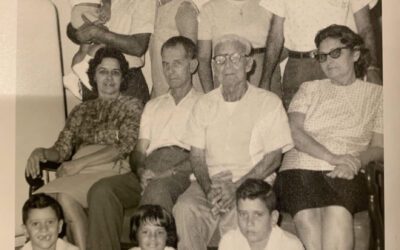
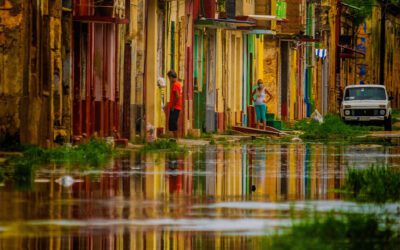
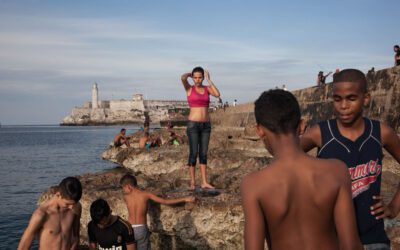
Beautiful and poignant entry. I left Cuba 50 years ago with my family at six years of age. This December, I will realize a life-long dream. I will return to the land of my birth and finally get to see my aunt after all these years. Although we speak on the phone every month, I cannot wait to finally hug her, introduce her to my husband and son and step into the same apartment in Habana Vieja I used to visit every Sunday to have dinner with her and my grandparents. My mother, her older sister, passed away 11 years ago, never returning to her beloved Cuba. But I know that both she and my father, who is also deceased would be happy to know I will return and finally close the hole in heart that has never healed. Political affiliations aside. family is all we have in the end,and really all we ever need. I have carried many memories of Cub, my aunt, my grandparents, the beautiful apartment with many happy memories for a lifetime. It is truly a dream come tru to be able to go full circle and return to my homeland.
An article that speaks for so many, tugging at our heart when we read a story that is also ours, and arriving at a conclusion that could belong to many of us.
Gracias!
Beautiful thanks for posting!
Exquisite expressions of our bicultural experience and legacy.
Wow! What a powerful article! I am in tears, remembering my own complicated allegiance to my island, Cuba. The place where I was born but do not remember. The place that my parents kept alive in my heart until their death. The place that defines who I am and why I am a proud Cubana.
Thank you Ms. Balmazeda! Big hug to you!
I agree. This article is absolutely beautiful and emotional. I think it speaks for a whole generation of Cubans who left the island when they were little or were born here from proud-to-be-Cuban families. I belong to another generation of Cubans who didn’t get out until much later, but I find this confessions of the heart very touching and they always make me look at our past with nostalgia and sadness. My Cuba is different from this one, but no Cuban story is that different. The commonalities are endless, like the emotions articles like this bring about.
Gracias Liz!
As someone very uneducated on Cuban and Cuban-American cultures and issues until recently, this essay beautiful put things into perspective for me. It reminded me of the great theorist Gloria Anzaldua, and her concept nepantla. Nepantla describes a feeling of in-betweenness; feeling in the middle of two cultures while not entirely existing to either. I’ve personally experienced this, being Italian and very prideful in my culture but having to conform to and embrace whiteness, and checking my privilege. Thus, it’s incredibly interesting to read about it from an entirely different perspective, and is definitely enlightening for me. It opened my eyes to the reality and emotional investments in Cuba of Cuban Americans, and also gave me an element of that reality to connect to, which was really special.